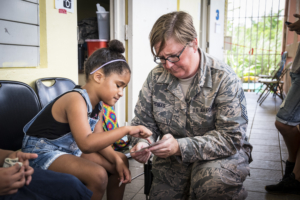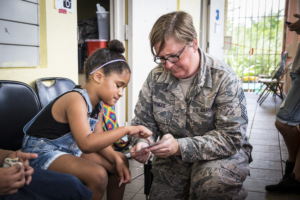The Process of Improving Healthcare in Puerto Rico


Puerto Rico is a United States territory located east of Cuba with the Atlantic Ocean and the Caribbean Sea surrounding it. This beautiful tropical paradise is a land of wonder with picturesque landscapes for tourists and residents alike. However, behind this convincing guise is the reality of poverty and illness that plagues the country. With 43% of Puerto Rico living in poverty, the healthcare system is a system of great importance as it acts as a crutch to those living in poverty. Here is some information about healthcare in Puerto Rico.
Medicaid in Puerto Rico
Medicaid in Puerto Rico serves approximately half of Puerto Rico’s population of 3.2 million people. The Medicaid program in Puerto Rico is an outlier in comparison to other U.S. states, having to supply healthcare to those in need while facing shortages of doctors and funds. The annual healthcare budget in Puerto Rico is $367 million as of 2019, however, estimates determine that expenditures are closer to $2.8 billion.
Additionally, the Medicaid program operates on a Managed Care system. This system helps to manage cost, utilization and quality, making healthcare in Puerto Rico more affordable and offering better utilization of health resources.
Additional Funding
The Affordable Care Act, section 2005, provided the Medicaid program in Puerto Rico with $5.4 billion in additional Medicaid funding from July 1, 2011, to Sept 30, 2019. Puerto Rico also received an additional $925 million in funds to establish a healthcare market. The country had to exhaust Previous Affordable Care Act funds before it could use additional funds. The Affordable Care Act is a health reform law that passed in March 2010. The law has three goals including increasing the availability of affordable health insurance, expanding the coverage of the Medicaid program to cover adults below 138% of the federal poverty line and supporting innovative methods of medical care delivery to decrease costs of healthcare.
Doctors Leaving the Country
While medical professions receive respect and high pay in the U.S., this is not necessarily true for Puerto Rico. In fact, many Puerto Ricans enter the medical field so they can one day migrate to the mainland U.S.A. According to the Economic Research Institute, the annual average income for a Family Doctor is $194,307, while the U.S. average is $237,000.
Another issue that doctors in Puerto Rico are facing is the scarcity of medical equipment and personnel, often resulting in prolonged waiting times for appointments. According to Vox, the waitlist can take “as long as four to six months to see professionals,” a direct result of Puerto Rico losing approximately 15% of all medical personnel on the island.
Puerto Rico College of Physicians and Surgeons
Shortages in medical personnel and lack of funding have increased wait times and created shortages of medical supplies in Puerto Rico. Thankfully, the Puerto Rico College of Physician and Surgeons is working to combat these challenges. This organization emerged through Law 77 in 1994 and is mandatory for all students pursuing a career in the medical field. The Puerto Rican government uses it to provide doctors where people need them most. The Puerto Rico College of Physicians and Surgeons ensures that doctors studying in Puerto Rico serve there for sometime before finding opportunities elsewhere. As of 2016, the organization has lost approximately 4,000 members to the “temptation in accepting one of those lucrative job offers,” shrinking the number of members from 14,000 to 10,000.
Jaideliz Moreno
The state and quality of healthcare in Puerto Rico have fallen as the years pass by, proving to negatively affect the population. On a seemingly average day in Vieques, a small island off the coast of mainland Puerto Rico, Jaideliz Moreno developed flu-like symptoms. This is a common issue that people face on the mainland U.S.A., but it was a life or death situation for Jaideliz. This was because Vieques, recovering from the destruction that Hurricane Maria caused in 2017, lacked a proper hospital. A small clinic for veterans alongside a labor and delivery room has replaced the hospital that Hurricane Maria destroyed. The small clinic named Susana Centeno Community Health Center lacked the medical supplies necessary to cure 13-year-old Jaideliz Moreno. A helicopter rushed her to mainland Puerto Rico but she died on the way there.
FEMA —Federal Emergency Management Agency— is an agency that strives to support citizens and first responders to show that as a nation we work better together in the face of adversity and disaster. As of January 2020, FEMA has approved $39.5 million to fund the Susana Centeno Community Health Center until a permanent hospital in Vieques is built. As of now, there is no projected completion date of the Vieques hospital.
Healthcare in Puerto Rico is a developing system in need of vital resources and proper funding. This kind of support is key to the growth and improvement of Puerto Rico’s medical work.
– Ernesto Gaytan
Photo: Flickr
The post The Process of Improving Healthcare in Puerto Rico appeared first on The Borgen Project.
Original Source: borgenproject.org
Visited 725 Times, 1 Visit today
